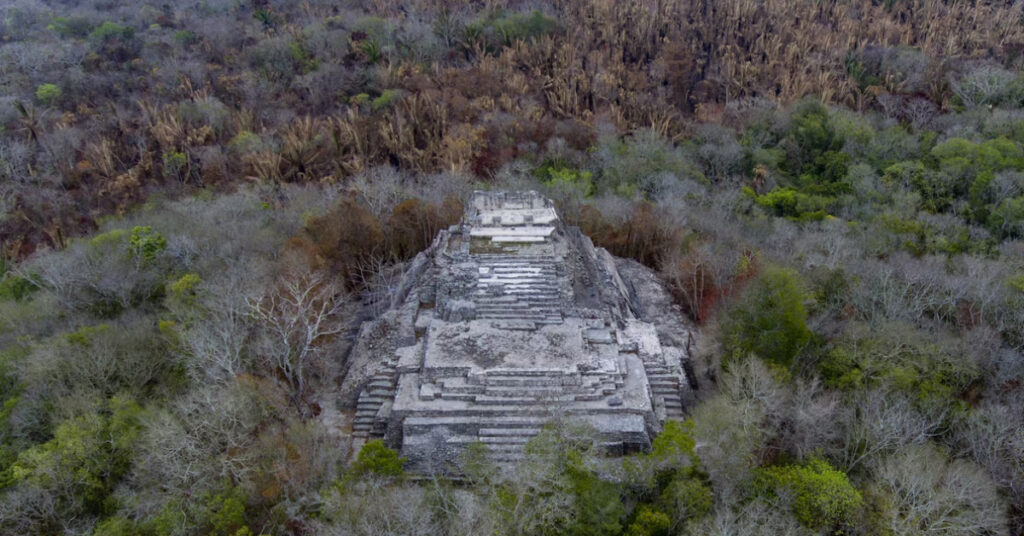BACALAR, MEXICO – In an exciting development for both archaeologists and tourists, Mexico’s rich cultural landscape is about to unveil a new gem: the archaeological zone of Ichkabal. Located 58 kilometers southwest of the popular tourist destination Bacalar, Ichkabal, often referred to as the “Mesoamerican Egypt” for its grand structures, is poised to become a major attraction. The site, known for its three pyramids that surpass the Temple of Kukulcán in Chichen Itza in size, is set to open to the public in September 2024, offering a new window into the ancient Mayan civilization.
A Giant in Mayan History
Ichkabal, which translates to “among lowlands” in the Mayan language, remained hidden under the dense jungle vegetation until its discovery in 1995. The site spans a massive 30 square kilometers, making it one of the largest and oldest Mayan archaeological sites still standing. Its structures, some towering over 40 meters in height, have drawn comparisons to the most iconic Mayan sites, including Chichen Itza and Uxmal.
The Spanish archaeologist Enrique Nalda, who led the initial research until his death in 2010, was instrumental in bringing Ichkabal to light. Today, a dedicated team of archaeologists continues to restore and study the site, revealing its significance in the early development of Mayan civilization. The city, which was likely occupied from the Late Preclassic period (400 BC to AD 200) until around AD 1500, was an important political and cultural center during its peak.
The monumental architecture of Ichkabal includes a main plaza stretching 300 meters, surrounded by temples, pyramids, and advanced hydraulic systems. Among the most remarkable discoveries is a cistern used for storing water and corn, highlighting the city’s sophisticated engineering capabilities. Despite the loss of their original facades, these structures remain awe-inspiring, embodying the grandeur of ancient Mayan craftsmanship.
Tourism and Cultural Significance
The opening of Ichkabal is expected to attract significant interest from tourists, particularly due to its connection to the Maya Train project. Alan Maciel Vallejo, a researcher at the National Institute of Anthropology and History (INAH), anticipates that the site will draw large crowds, especially from cruise visitors arriving at the nearby port of Mahahual. “When the boats arrive at Mahahual, they usually take tourists to two archaeological zones: Chacchoben and Kohunlich. So, Ichkabal, which is closer than Kohunlich, could have a larger capacity due to its proximity to Mahahual,” Maciel Vallejo explained.
The Maya Train, a major infrastructure project designed to boost tourism and economic development in southeastern Mexico, will play a crucial role in connecting Ichkabal with other significant archaeological sites in the region, such as Kinichna, Kohunlich, and Dzibanché. The train is expected to facilitate easier access for visitors, further enhancing the site’s appeal.
The Role of the Maya Train in Revitalizing Cultural Heritage
The opening of Ichkabal is part of a broader initiative by the Mexican government to restore and promote the country’s rich archaeological heritage. This effort is spearheaded by the Program for the Improvement of Archaeological Zones (Promeza), a government initiative implemented by the federal Ministry of Culture through the INAH. The project is being carried out in collaboration with the National Fund for the Promotion of Tourism, the Ministry of National Defense, and the consortia involved in the construction of the Maya Train.
As part of this initiative, 27 Mayan archaeological sites are being rescued and restored, with Ichkabal being one of the most anticipated. The site is set to open on September 14, 2024, coinciding with Mexico’s national holidays. Its debut will be celebrated alongside other significant openings in the region, including the Hotel Tren Maya Palenque in Chiapas, Jaguar Park in Tulum, and Quintana Roo Park in Chetumal.
A New Era for Mayan Archaeological Tourism
As Chichen Itza recorded an influx of 2.3 million visitors in 2023, the opening of Ichkabal presents a new frontier for archaeological tourism in Mexico. With its vast size, towering structures, and rich historical significance, Ichkabal is poised to rival the country’s most visited archaeological sites. Its strategic location near Bacalar and its integration into the Maya Train network are expected to make it a key destination for both domestic and international tourists.
The unveiling of Ichkabal marks a significant milestone in the preservation and promotion of Mexico’s cultural heritage, offering a new chapter in the exploration of the ancient Mayan civilization. As visitors prepare to explore its ancient ruins, Ichkabal stands ready to become one of Mexico’s most iconic archaeological treasures.
